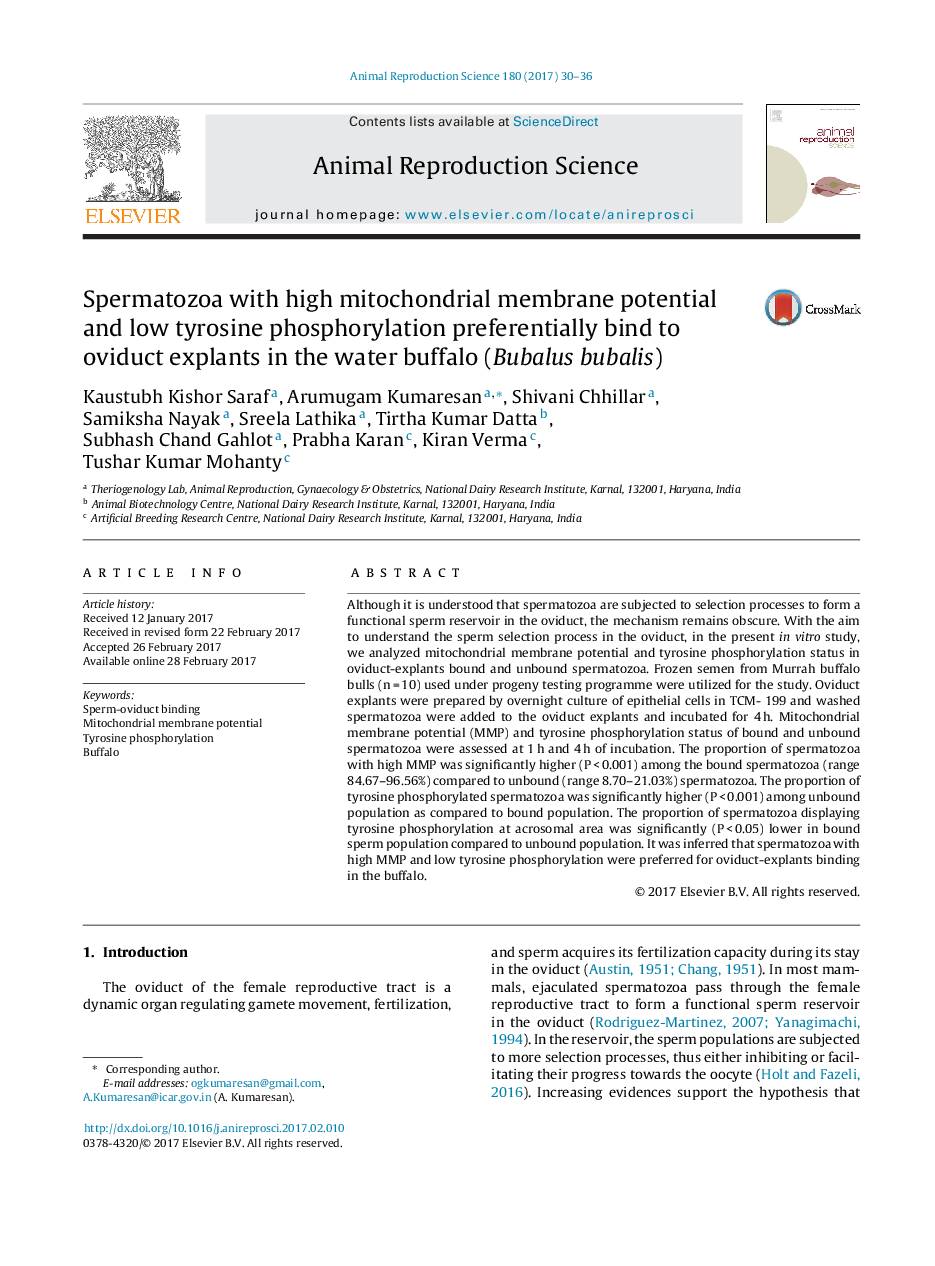| Article ID | Journal | Published Year | Pages | File Type |
|---|---|---|---|---|
| 5520257 | Animal Reproduction Science | 2017 | 7 Pages |
â¢The study assessed the differences in mitochondrial membrane potential (MMP) and tyrosine phosphorylation in oviduct-explant bound and unbound sperm populations.â¢A majority of the oviduct-explants bound spermatozoa had high MMP compared to unbound spermatozoa; the difference was highly significant.â¢The proportion of tyrosine phosphorylated spermatozoa was significantly higher (P < 0.001) among unbound population as compared to bound population.â¢The proportion of spermatozoa displaying tyrosine phosphorylation at acrosome was significantly (P < 0.05) lower in bound sperm population compared to unbound population.â¢Inferred that spermatozoa with high MMP were preferred for sperm-oviduct binding and tyrosine phosphorylation was less frequent in oviductal explants-bound spermatozoa.
Although it is understood that spermatozoa are subjected to selection processes to form a functional sperm reservoir in the oviduct, the mechanism remains obscure. With the aim to understand the sperm selection process in the oviduct, in the present in vitro study, we analyzed mitochondrial membrane potential and tyrosine phosphorylation status in oviduct-explants bound and unbound spermatozoa. Frozen semen from Murrah buffalo bulls (n = 10) used under progeny testing programme were utilized for the study. Oviduct explants were prepared by overnight culture of epithelial cells in TCM- 199 and washed spermatozoa were added to the oviduct explants and incubated for 4 h. Mitochondrial membrane potential (MMP) and tyrosine phosphorylation status of bound and unbound spermatozoa were assessed at 1 h and 4 h of incubation. The proportion of spermatozoa with high MMP was significantly higher (P < 0.001) among the bound spermatozoa (range 84.67-96.56%) compared to unbound (range 8.70-21.03%) spermatozoa. The proportion of tyrosine phosphorylated spermatozoa was significantly higher (P < 0.001) among unbound population as compared to bound population. The proportion of spermatozoa displaying tyrosine phosphorylation at acrosomal area was significantly (P < 0.05) lower in bound sperm population compared to unbound population. It was inferred that spermatozoa with high MMP and low tyrosine phosphorylation were preferred for oviduct-explants binding in the buffalo.
